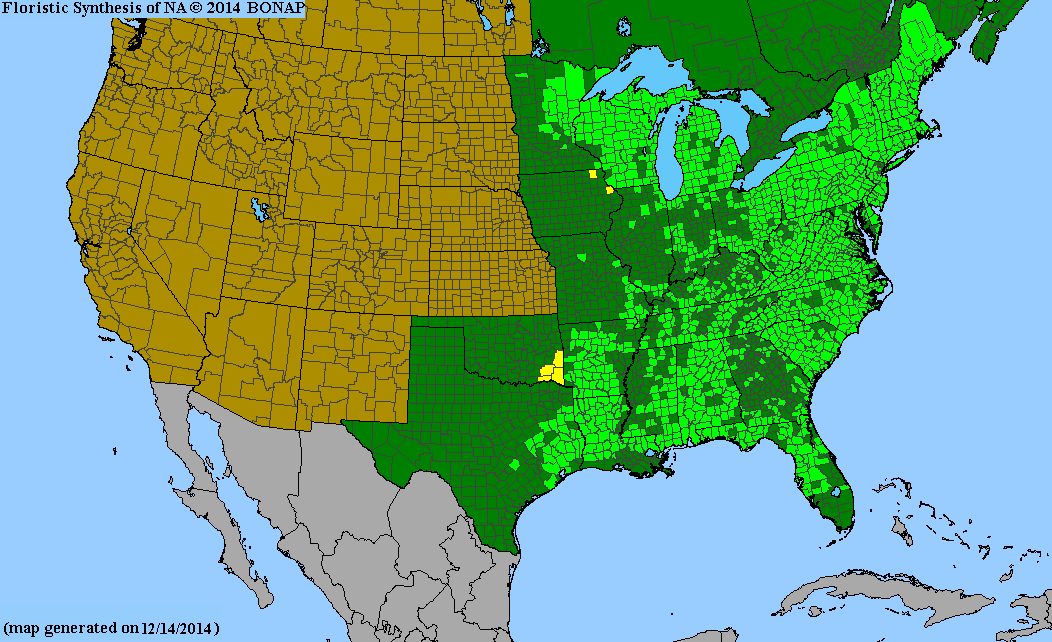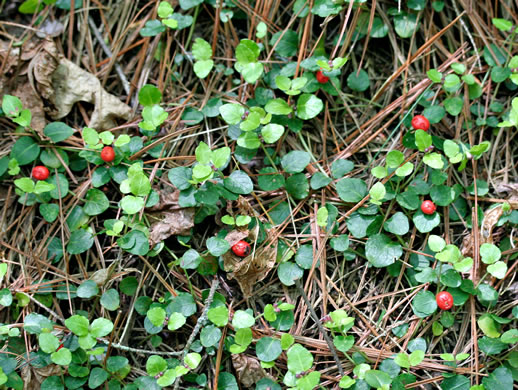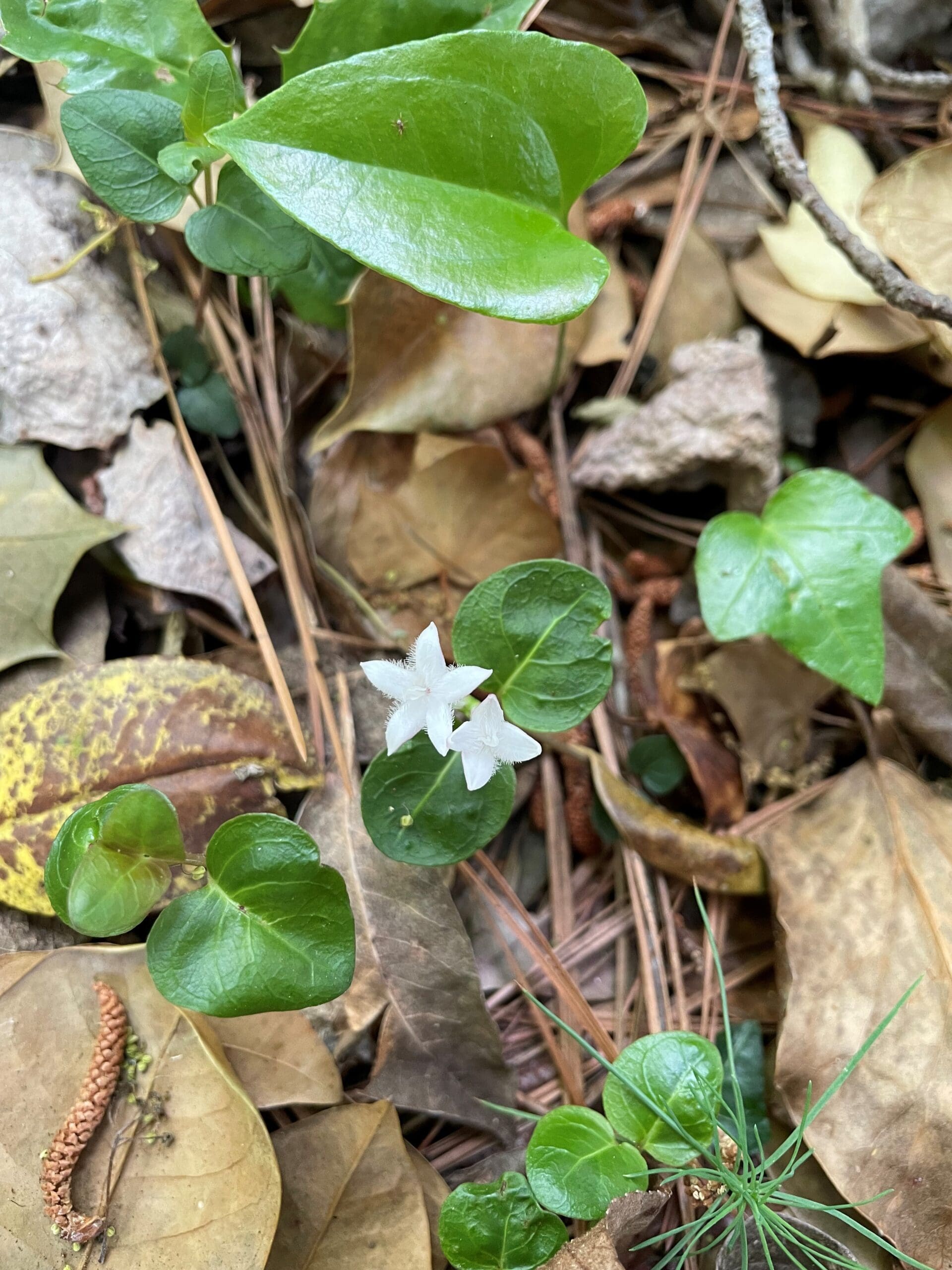Rubiaceae
partridge berry
Mitchella repens
Other Common Names
twinflower
Plant Type
Herbaceous Wildflower
Life Cycle
Perennial
Typical Size
<0.5 ft. tall
>3 ft. wide
Inolerant of
Poorly Drained Soil
Propagation
By seed, By cutting, By division
Plant Propagation Notes
Stems root at nodes along the ground. These rooted nodes can be cut free from the vine and replanted to propagate. Seed requires cold moist stratification for six weeks.
Plant Planting Notes
Plant an an area with moist acidic soil, in the shade, where partridgeberry can spread.
Plants/Diseases
No significant disease or pest issues.
Wildlife Benefits
Fruit/seeds for birds
Leaves
Leaves opposite, cordate to ovate, with entire margins.
Flowers
Flowers appear as pairs from the leaf axils. White, sometimes with pink blush. Tube-shaped with four petals that flare at the end.
Fruit
Bright red berry. Form leucocarpa has white berries.
Bark
Pale green to brown.
Toxicity
No known toxicity.

USDA Hardiness Zones
3, 4, 5, 6, 7, 8
Light Exposure
Part Sun/Shade, Full Shade
Soil Moisture
Dry, Medium, Moist
Soil Drainage
Well-drained
Soil pH
Acidic (less than 6.0)
Native in South Carolina?
Yes
Plant Native Habitat
Partridgeberry grows in a variety of deciduous and coniferous forests, stream banks, or even on rotting logs.
Global Conservation Status (NatureServe)
Secure (G5)
Federal Conservation Status (USFWS)
Not Listed
Distribution Notes
Common throughout South Carolina.



